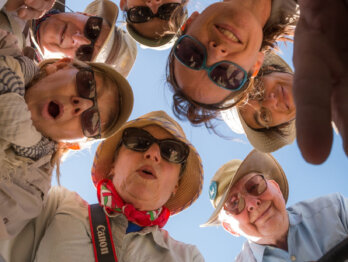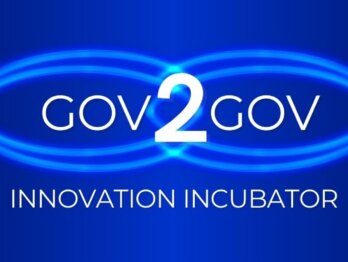Mission-oriented Innovation in Healthcare: Applying Missions to Beat Cancer

Individualised cancer care, better screening, translational research and improved treatment: countries across the EU are on a mission to beat cancer. In 2019, Sweden launched Vision Zero Cancer, a national mission to combat cancer. It relies on mission-oriented innovation, a policy approach that engages stakeholders and citizens across disciplines and sectors to define the actions and strategies required to achieve this goal. The mission is financially supported by the Swedish Innovation Agency, Vinnova.
In 2021, the Swedish innovation milieu Vision Zero Cancer joined forces with the OECD Observatory for Public Sector Innovation (OPSI). Through the Mission-oriented Innovation Bootcamp – a deep dive into the intersectionality between mission-oriented innovation and personalised medicine – OPSI supported national and local actors to build workable mission-oriented innovation approaches.
The mission to beat cancer
Cancer continues to be a leading cause of death worldwide. It exerts tremendous physical, emotional and financial strain on individuals, families, communities and health care systems around the globe. Improved cancer care and access to health care services has been a longstanding priority for the European Commission (EC).
In 2021, the EC presented Europe’s Beating Cancer Plan, a new approach to cancer prevention, detection, treatment and care. Combatting the growing burden of cancer is also one of five Missions under the Horizon Europe Framework Programme for Research and Innovation (2021–2027).
Sweden’s Vision Zero Cancer initiative recognises the need to strengthen national and international co-operation across disciplines and sectors for more rapid development and uptake of research and technology solutions. In this regard, missions can be leveraged to establish clear outcomes to address grand societal challenges that are cross-sectoral, ambitious, time-bound and measurable.
They can thereby be used to steer the EU’s goal of “more than 3 million lives saved, living longer and better” by 2030.
However, missions also leave room for country and context specificity – critical when working in the healthcare sector. Investments made in equitable healthcare, research and innovation can leverage the potential of new technologies with scientific and clinical progress. In order to attain maximal leverage there is a need to strengthen national and international co-operation across disciplines and sectors to enable rapid research and technology developments and create conditions for a system transformation.
The regimen of “one size fits all” in cancer care is no longer applicable. While personalised medicine is a new and promising approach to prevent and treat cancer, its implementation in healthcare systems requires a broader societal perspective, including economic sustainability measures and a focus on equal access. Mission-oriented innovation enables key players along the value chain to work together to meet these goals.
To further this work, the Swedish innovation community and national mission Vision Zero Cancer joined forces with OECD-OPSI to take an action-oriented approach to delivering the mission directed at personalised medicine.

Introducing the Swedish health ecosystem to mission-oriented innovation
The purpose of the Mission-oriented Innovation Bootcamp was to introduce the concept and benefits of applying mission-oriented innovation in order to improve the availability of personalised medicine for cancer patients. The two-day workshop centred on “how to make the Mission come to life”. It analysed “who needs to do what and how” to activate the ecosystem and share synergies across different innovations. Participants had the opportunity to work together, ask questions and learn from experts and peers.
In the opening remarks, Ebba Hallersjö Hult, Head of Vision Zero Cancer, highlighted the importance of involving the whole healthcare system – including the wider ecosystem of actors – in setting a common mission. In the realm of precision medicine, these include actors from national collaborations for genomic medicine, such as Genomic Medicine Sweden, those governing reimbursement models, such as the Swedish Dental and Pharmaceutical Benefits Agency, and patient advocacy networks. The incorporation of these is critical, as patients should be a central partner in research development. An example of an all-encompassing approach, convening multiple actors, is the Vision Zero Cancer flagship initiative “Test Bed Sweden for Clinical Trials and Implementation of Precision Health in Cancer Care”.
Members of the OECD, UCL Institute for Innovation and Public Purpose and Dr. Bettina Ryll, part of the Horizon Europe Mission Board for Cancer, subsequently shared insights on how missions combine strategy, coordination and implementation to advance entire systems (such as the health care system) and tackle complex global challenges. The development of global COVID-19 vaccines was used as a prime example of a successful application of a missions approach.
Practical examples of successful mission-driven health care systems:
- In the Netherlands, Health Holland is working to improve dementia care by connecting the overall mission with local work, in so-called “Field Labs.”
- Germany’s national decade against cancer strategy is actively working to include additional forums for public opinion to become more patient-centred.
- The UK’s Camden Renewal Commission is using a central mapping tool to better understand the activities needed to achieve its mission of combatting child poverty.
- In Australia, the Genomics Health Futures mission established inclusive expert panels to develop and implement Missions.
These examples display the importance of experimenting with Missions and the power of sourcing and sharing experiences along the way.
Building capacity for change
Successful missions don’t just emerge; they are carefully crafted by building a systems’ capacity to meet set goals. Along with setting the Mission’s direction – in this case around personalised medicine – one also needs to mobilise sustainable ecosystem resources, including mission driven innovation knowledge and skills. The recording of the innovation bootcamp, especially noting the panel discussion, gives you possibility to gain insights into the value of working with different partnership and the importance of human behaviour, communication and building a culture of trust.
The pandemic has tested the healthcare system around the world but has also created an opportunity to redefine cancer care. We are not going back to the past. We are going to add a new normal and it is a great opportunity to define that new normal together.
Ebba Hallersjö Hult, Head of Vision Zero Cancer

Co-creation and mapping the signs of success
There are many ways of implementing Missions and the starting point, focus and scope are highly dependent on the context of the challenge at hand. For example, missions defined by governments often have a clearer sense of direction based on a political mandate, but require further support in the establishment of internal capacities and overarching ecosystems. Conversely, non-government missions may emerge through broad partnerships and thereby have greater clarity on the actors involved but less clarity on the definitions of the scope and direction of the challenge.
The mission of beating cancer, closing in on personalised medicine, links the directionality from governments with broader partnerships, entailing ecosystem support structures with a view to build capacity in methods, knowledge and funds while developing more flexible organisational structures. Mapping signs of success, systemic levers and stakeholders involved in the Missions helps mission partners understand where change is needed and how we can shift existing positions, interactions and value exchanges.
Two questions for guidance when coming together around a Mission:
- What are the most important short-term and long-term signs of success for the mission?
- What are the systemic levers to achieve success? Who needs to be involved?
The process of co-creating is a big task in and of itself. Gathering all relevant stakeholders in the same room and around a common cause is one of the foundational blocks of positioning an ecosystem for systemic change and the long-term impact of mission-driven innovation.
In 2022, Vision Zero Cancer and OECD-OPSI will continue to design and deliver on the work we began in 2021. Together we aim to create lasting mission-oriented innovation supporting ecosystem capacity to bolster the mission of beating cancer. We invite you to follow our progress as we learn lessons and uncover key ingredients for taking ambitious missions into action.
You can watch the recording of the bootcamp and the panel discussion. If you are interested in learning more about mission-oriented innovation and how OPSI can support your work, please get in touch via [email protected].
To connect with Vision Zero Cancer go to their website www.visionzerocancer.com or get in contact with head of the milieu Ebba Hallersjö Hult (ebba.hallersjö[email protected]) or innovation leader Viktoria Asplund ([email protected]).












